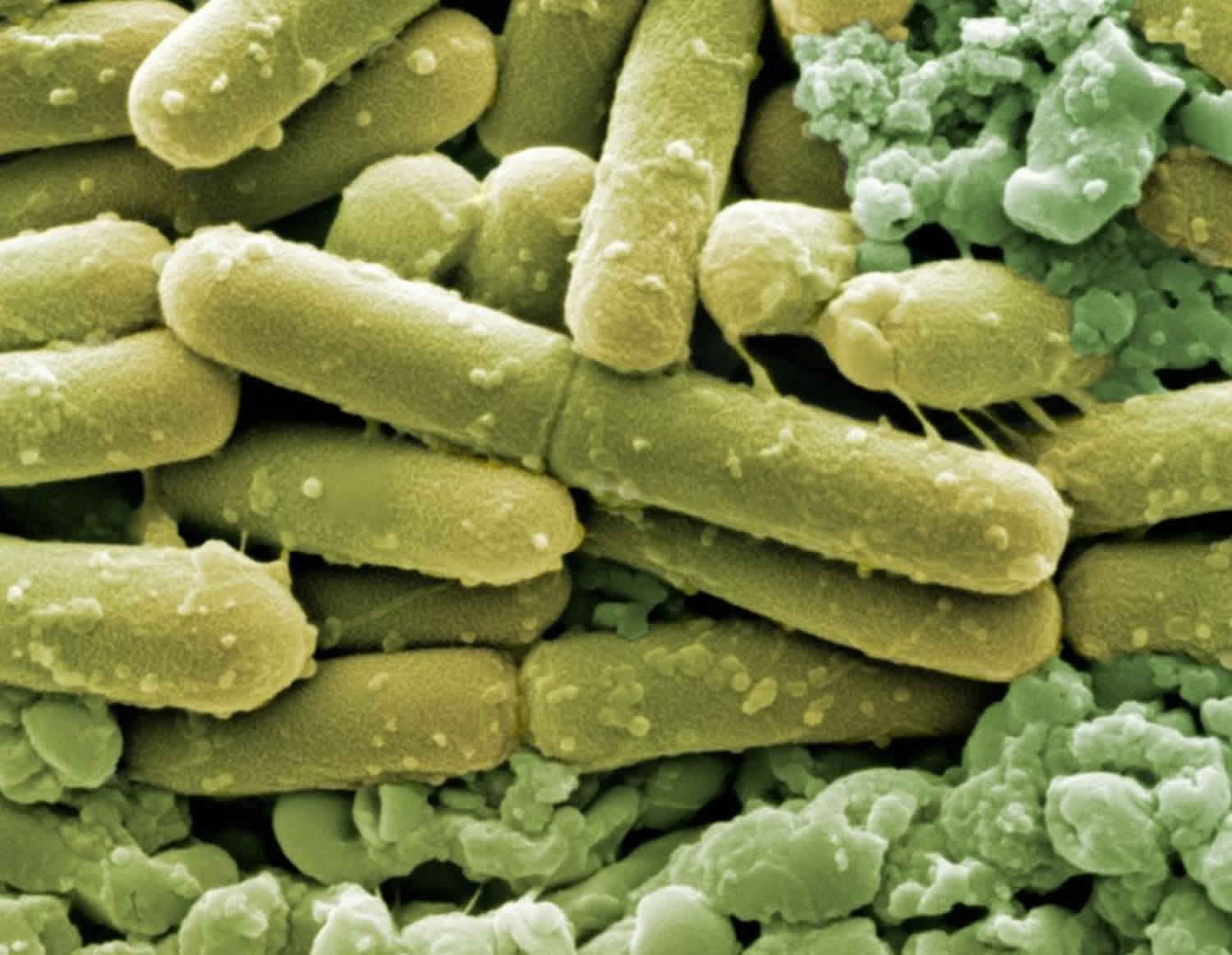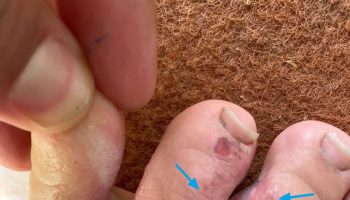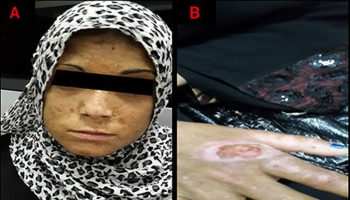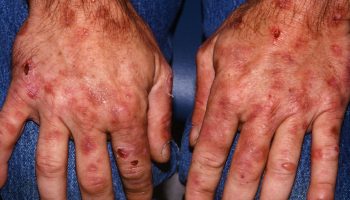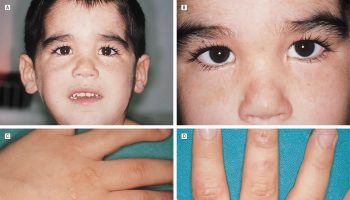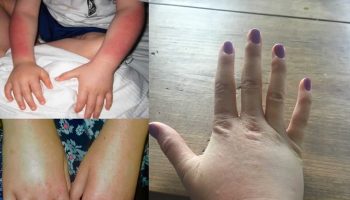Clostridioides difficile infection
Clostridioides difficile is formerly known as Clostridium difficile and often called C. difficile or C. diff., is a bacterium (germ) that is commonly found in the environment that can cause diarrhea and colitis (an inflammation of the colon). Most cases of clostridioides difficile occur while you’re taking antibiotics or soon after you’ve finished taking antibiotics. People on antibiotics are 7 to 10 times more likely to get clostridioides difficile while on the drugs and during the month after. That’s because antibiotics affect your microbiome by wiping out bad germs but also the good germs that protect your body against infections. The effect of antibiotics can last as long as several months. If you come in contact with clostridioides difficile germs during this time, you can get sick. If you’ve been taking antibiotics for more than a week, you could be even more susceptible.
Clostridioides difficile causes close to half a million illnesses each year and about 1 in 5 patients who get clostridioides difficile will get it again. Clostridioides difficile can be deadly. Within a month of diagnosis, 1 in 11 people over age 65 died of a healthcare-associated clostridioides difficile infection.
Clostridioides difficile bacteria are commonly found in the environment, but people usually only get clostridioides difficile infections when they are taking antibiotics. That’s because antibiotics not only wipe out bad germs, they also kill the good germs that protect your body against infections. The effect of antibiotics can last as long as several months. If you come in contact with clostridioides difficile germs during this time, you can get sick. You are more likely to get clostridioides difficile if you take antibiotics for more than a week.
Clostridioides difficile spreads when people touch food, surfaces, or objects that are contaminated with feces (poop) from a person who has clostridioides difficile.
Figure 1. Clostridioides difficile bacteria
What diseases result from clostridioides difficile infection?
- pseudomembranous colitis
- toxic megacolon
- perforations of the colon
- sepsis
- death (rarely)
How is clostridioides difficile transmitted?
Clostridioides difficile is shed in feces. Any surface, device, or material (such as commodes, bathtubs, and electronic rectal thermometers) that becomes contaminated with feces could serve as a reservoir for the clostridioides difficile spores. Clostridioides difficile spores can also be transferred to patients mainly via the hands of healthcare personnel who have touched a contaminated surface or item.
Is clostridioides difficile contagious?
Yes. To keep from spreading clostridioides difficile to to others:
- Wash hands with soap and water.
- Try to use a separate bathroom if you have diarrhea.
- Take showers and wash with soap.
What is clostridioides difficile colonization?
Sometimes when healthy people come into contact with clostridioides difficile, they will begin to carry clostridioides difficile germs in or on their body, but they won’t get sick.
In medical terms, they are said to be “colonized” with clostridioides difficile. This is also sometimes called “clostridioides difficile carriage,” and a person might be said to be a “clostridioides difficile carrier.”
Someone who is colonized has NO signs or symptoms.
Colonization is more common than clostridioides difficile infection and does not require treatment. Once your body is colonized, you can remain colonized for several months.
If you are colonized with clostridioides difficile, you can spread the infection to others.
Some reasons you might become colonized are:
- You’ve recently recovered from clostridioides difficile.
- You have a history of taking antibiotics.
- You’ve recently been hospitalized.
Once your body is colonized with clostridioides difficile, you can remain colonized for several months. Colonization is more common than clostridioides difficile infection and does not require treatment.
Because it’s possible to spread clostridioides difficile to others while you’re colonized, it’s important to always practice good hand hygiene, making sure to wash your hands well with soap and water before eating and after using the bathroom.
What are the differences between clostridioides difficile colonization and infection?
Clostridioides difficile colonization is more common than clostridioides difficile infection. The patient exhibits NO clinical symptoms (asymptomatic) but does test positive for the clostridioides difficile organism or its toxin.
With clostridioides difficile infection, the patient exhibits clinical symptoms and tests positive for the clostridioides difficile organism or its toxin.
Can I get clostridioides difficile in the hospital?
Yes. clostridioides difficile is more common in healthcare settings, such as hospitals and nursing homes. This is because many people colonized with clostridioides difficile are staying or being treated there.
How long can clostridioides difficile germs live?
When clostridioides difficile germs are outside the body, they become spores. These spores are an inactive form of the germ and have a protective coating allowing them to live for months or sometimes years on surfaces and in the soil.
The germs become active again when these spores are swallowed and reach the intestines.
Healthy people will often not be infected even if the spores reach their intestines, but if your immune system is weakened or you’ve recently taken antibiotics, you could get sick.
How do I kill clostridioides difficile germs at home?
Finding clostridioides difficile germs in the home is not unusual, even when no one in the home has been ill with clostridioides difficile. Most healthy adults who come in contact with clostridioides difficile in the home won’t get sick.
Hospitals use special cleaning products to kill clostridioides difficile, but you can make a cleaner at home. Mix 1 part bleach to 10 parts water (for example, 1/4 cup bleach poured into 2 1/2 cups water).
Surfaces
When you’re cleaning, focus on items that are touched by hands:
- door knobs
- electronics (be careful because bleach can damage many electronics and plastics)
- refrigerator handles
- shared cups
- toilet flushers and toilet seats
Laundry
If someone in your house has clostridioides difficile, wash items they touch before others use them. These include but are not limited to:
- bed linens
- towels
- household linens
- clothing, especially underwear
If these things have visible poop, rinse them well before washing.
Then launder in a washer and dryer, using the hottest water that is safe for those items. Use chlorine bleach if the items can be safely washed with it.
Wash your hands with soap and water after you handle the dirty laundry.
It’s OK to take clothes to a dry cleaner that were worn by a patient infected with clostridioides difficile. However, dry cleaning isn’t as effective as other methods at killing the spores. So this option should be used only for clothes that can’t be machine-washed.
When can I go back to work? When can my children go back to school?
You and your children should return to work or school only when your symptoms are gone.
Can I get clostridioides difficile again?
Some people get clostridioides difficile over and over again.
- One in 5 people who’ve had clostridioides difficile will get it again.
- If you start having symptoms again, go back to your doctor.
- For those with repeat infections, innovative treatments, including fecal microbiota transplants, have shown promising results.
The best way to be sure you don’t get clostridioides difficile again is to avoid taking unnecessary antibiotics and to wash your hands with soap and water every time you use the bathroom and before you eat anything.
If you’ve had a clostridioides difficile infection, tell all of your healthcare providers. This important information will help them make the best decisions when prescribing antibiotics in the future.
This is as important at your dentist’s office as it is when you see your primary care doctor.
Can I still spread clostridioides difficile after treatment?
The risk of spreading clostridioides difficile after completing treatment is low. But if you’re colonized, you can still spread it to others.
So always wash your hands with soap and water before you eat and after you use the bathroom. Showering and washing with soap is the best way to remove any clostridioides difficile germs you might be carrying on your body.
After clostridioides difficile treatment, can I be tested again to make sure I’m cured?
No, because once you recover from your clostridioides difficile infection, you could still be carrying the germs.
A test would only show the germs are still there, but not whether you’re likely to become sick again.
Risk factors for clostridioides difficile
Most cases of clostridioides difficile occur when you’ve been taking antibiotics (e.g., fluoroquinolones, third/fourth generation cephalosporins, clindamycin, carbapenems).
You are at more likely to get clostridioides difficile if you:
- Are 65 or older (more than 80% of clostridioides difficile deaths happen among those 65 and older)
- Recently stayed in a hospital or nursing home
- Have a weakened immune system
- Have had gastrointestinal surgery/manipulation
- Have had a previous infection with clostridioides difficile or known exposure to the germs
- Other possible causes include proton pump inhibitors and H2-blockers.
But you can get clostridioides difficile even if none of these apply.
Clostridioides difficile prevention
There are steps you can take to try to prevent getting or spreading clostridioides difficile:
- Wash your hands with soap and water after you use the bathroom and before you eat
- If you have diarrhea, clean the bathroom that you used before anyone else uses it. Use bleach mixed with water or another disinfectant to clean the toilet seat, handle, and lid.
If someone with clostridioides difficile (or caring for someone with clostridioides difficile) doesn’t clean their hands with soap and water after using the bathroom, they can spread the germs to everything they touch.
And if someone with clostridioides difficile can’t take a shower with soap and water, they can end up with clostridioides difficile germs on their skin.
Then, when someone else touches the skin of that person, or the surfaces that person touched, they can pick up the germs on their hands.
clostridioides difficile germs are so small relative to our size that if you were the size of the state of California, a germ would be the size of a baseball home plate. There’s no way you can see clostridioides difficile germs on your hands, but that doesn’t mean they’re not there.
Washing with soap and water is the only way to prevent the spread from person to person.
Remember: you can come in contact with clostridioides difficile germs—and even carry them on, or in, your body—and not get sick. But that doesn’t mean you can’t infect others.
Health care providers can also help prevent clostridioides difficile by taking infection control precautions and improving how they prescribe antibiotics.
Clostridioides difficile symptoms
Clostridioides difficile symptoms might develop within a few days after you begin taking antibiotics.
- Diarrhea including loose, watery stools (poop) or frequent bowel movements for several days. Severe diarrhea causes you to lose a lot of fluids. This can put you at risk for dehydration.
- Fever
- Stomach tenderness or pain
- Loss of appetite
- Nausea
If you have been taking antibiotics recently and have symptoms of clostridioides difficile, you should see a doctor.
- Developing diarrhea is fairly common while on, or after taking, antibiotics, but in only a few cases will that diarrhea be caused by C.diff. If your diarrhea is very severe, do not delay getting medical care.
- Your doctor will review your symptoms and order a lab test of a stool (poop) sample.
- If the test is positive, you’ll take an antibiotic (e.g. vancomycin or fidaxomicin) for at least 10 days. If you were already taking an antibiotic, your healthcare provider might ask you to stop taking it if they think it’s safe to do so.
- Your doctor might decide to admit you to the hospital, in which case your healthcare providers will use certain precautions, such as wearing gowns and gloves, to prevent the spread of clostridioides difficile to themselves and to other patients.
Clostridioides difficile complications
The most common clostridioides difficile complications include:
- dehydration
- inflammation of the colon, known as colitis
- severe diarrhea
Rare clostridioides difficile complications include:
- serious intestinal conditions, such as toxic megacolon
- sepsis, the body’s extreme response to an infection
- death
Clostridium difficile diagnosis
If you have been taking antibiotics recently and have symptoms of clostridioides difficile, you should see your health care provider. Your doctor will ask about your symptoms and do a lab test of your stool. In some cases, you might also need an imaging test to check for complications.
Laboratory tests
- Molecular tests: FDA-approved PCR assays, which test for the gene encoding toxin B, are same-day tests that are highly sensitive and specific for the presence of a toxin-producing clostridioides difficile organism. Molecular assays can be positive for clostridioides difficile in individuals who are asymptomatic. When using multi-pathogen (multiplex) molecular methods, the results should be read with caution. In addition, patients with other causes of diarrhea might be positive, which could lead to over-diagnosis and treatment.
- Antigen detection for clostridioides difficile: These are rapid tests (<1 hour) that detect the presence of clostridioides difficile antigen. Because results of antigen testing alone are nonspecific, antigen assays have been employed in combination with tests for toxin detection, PCR, or toxigenic culture in two-step testing algorithms.ve results occur when specimens are not promptly tested or kept refrigerated until testing can be done.
- Toxin testing for clostridioides difficile:
- Tissue culture cytotoxicity assay detects toxin B only. This assay requires technical expertise to perform, is costly, and requires 24 to 48 hours for a final result. It does provide specific and sensitive results for clostridioides difficile infection. While it served as a historical gold standard for diagnosing clinical significant disease caused by clostridioides difficile, it is recognized as less sensitive than PCR or toxigenic culture for detecting the organism in patients with diarrhea.
- Enzyme immunoassay detects toxin A, toxin B, or both A and B. Due to concerns over toxin A-negative, B-positive strains causing disease, most laboratories employ a toxin B-only or A and B assay. Because these are same-day assays that are relatively inexpensive and easy to perform, they are popular with clinical laboratories. However, there are increasing concerns about their relative insensitivity (less than tissue culture cytotoxicity and much less than PCR or toxigenic culture).
- Clostridioides difficile toxin is very unstable. The toxin degrades at room temperature and might be undetectable within two hours after collection of a stool specimen. False-negative results occur when specimens are not promptly tested or kept refrigerated until testing can be done.
- Stool culture for clostridioides difficile: While this is the most sensitive test available, it is the one most often associated with false-positive results due to the presence of nontoxigenic clostridioides difficile strains. However, this can be overcome by testing isolates for toxin production (i.e. so-called “toxigenic culture”). Nonetheless, stool cultures for clostridioides difficile are labor-intensive, require an appropriate culture environment to grow anaerobic microorganisms, and have a relatively slow turnaround time (i.e. results available in 48 to 96 hours), making them less clinically useful overall. Results of toxigenic cultures do serve as a gold standard against which other test modalities are compared in clinical trials of performance.
Clostridium difficile treatment
In about 20% of patients, clostridioides difficile infection will resolve within two to three days of discontinuing the antibiotic to which the patient was previously exposed. If you were already taking a different antibiotic when you got clostridioides difficile, you doctor may ask you to stop taking that one.
Certain antibiotics can treat clostridioides difficile. Clostridioides difficile infection can usually be treated with an appropriate course (about 10 days) of antibiotics, including oral vancomycin or fidaxomicin. After treatment, repeat clostridioides difficile testing is not recommended if the patient’s symptoms have resolved, as patients often remain colonized.
If you have a severe case, you may need to stay in the hospital. If you have very severe pain or serious complications, you may need surgery to remove the diseased part of your colon.
About 1 in 5 people who have had get clostridioides difficile will get it again. It could be that your original infection came back or that you have new infection. Contact your health care provider if your symptoms come back.
